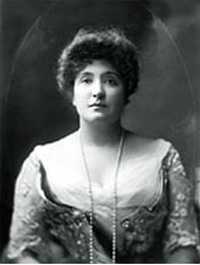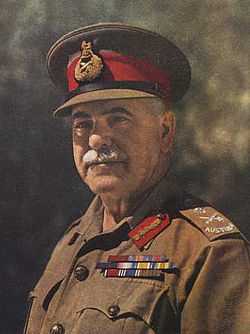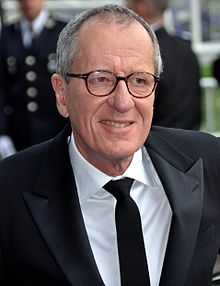Australians
| ||||||||||||||||
| Total population | ||||||||||||||||
|---|---|---|---|---|---|---|---|---|---|---|---|---|---|---|---|---|
| c. 24 million | ||||||||||||||||
| Regions with significant populations | ||||||||||||||||
| 23,534,699 | ||||||||||||||||
| 400,000[1] | ||||||||||||||||
| 200,000[2] | ||||||||||||||||
| 100,000[3][4] | ||||||||||||||||
| 90,000[5][6] | ||||||||||||||||
| 70,000[7] | ||||||||||||||||
| 55,000[8] | ||||||||||||||||
| 30,000[8][9] | ||||||||||||||||
| 20,000–25,000[10][11] | ||||||||||||||||
| 11,358[12][13] | ||||||||||||||||
| Languages | ||||||||||||||||
| English · Other minority languages[14] | ||||||||||||||||
| Religion | ||||||||||||||||
|
Christianity (Protestantism, Roman Catholicism) No religion or agnosticism Other minority religions[15] | ||||||||||||||||
| Related ethnic groups | ||||||||||||||||
Australians (/əˈstreɪljənz/), colloquially known as Aussies (/ɒziːz/), are an ethnic group and nation native to the continent of Australia, sharing a common history, culture, and language (Australian English). Legally, Australians are citizens of the Commonwealth of Australia, with their status governed by Australian nationality law.
The majority of Australians descend from the peoples of the British Isles – the Cornish, English, Irish, Manx, Scottish, and Welsh. The Colony of New South Wales was established by the Kingdom of Great Britain in 1788, with the arrival of the First Fleet, and five other colonies were established in the early 19th century, now forming the six present-day Australian states. Many early settlements were penal colonies, and transported convicts (and, later, ex-convicts) made up a significant proportion of the population in most colonies. Large-scale immigration did not occur until the 1850s, following a series of gold rushes. Further waves of immigration occurred after the First and Second World Wars, with many post-World War II migrants coming from southern and eastern Europe, the Middle East, south and east Asia, and the Pacific islands. Prior to British settlement, Australia was inhabited by various indigenous peoples – Aboriginal Australians, Aboriginal Tasmanians, and Torres Strait Islanders, a Melanesian people. A small percentage of present-day Australians descend from these peoples.
The development of a separate Australian identity and national character is most often linked with the period surrounding the First World War, which gave rise to the concept of the Anzac spirit. The Eureka Rebellion of 1854 and various events of the Second World War, most notably the Kokoda Track campaign, are also frequently mentioned in association with Australian identity. However, Australian culture predates the federation of the Australian colonies by several decades – Australian literature, most notably the work of the bush poets, dates from colonial times, while sporting teams representing the whole of Australia have been in existence since the 1870s. As a result of their shared language, cultural and sporting links, and status in the British Empire, Australians have historically identified most closely with peoples deriving from the former British Empire, especially Canadians, New Zealanders, and southern Africans of British descent.
History of Australians
Identity
Australians are referred to as 'Aussie' and 'Antipodean'.[16][17] Australians were historically referred to as 'Colonials', 'British' and 'British subjects'.[18][19][20][21] Australian identity draws on a multicultural, European and British cultural heritage.[22]
Indigenous
Indigenous Australians are descendants of the original inhabitants of the Australian continent.[23] Indigenous Australians migrated from Africa to Asia around 70,000 years ago[24] and arrived in Australia around 50,000 years ago.[25][26] The Torres Strait Islanders are indigenous to the Torres Strait Islands, which are at the northernmost tip of Queensland near Papua New Guinea. The term "Aboriginal" is traditionally applied to only the indigenous inhabitants of mainland Australia and Tasmania, along with some of the adjacent islands, i.e.: the "first peoples". Indigenous Australians is an inclusive term used when referring to both Aboriginal and Torres Strait islanders.
Dispersing across the Australian continent over time, the ancient peoples expanded and differentiated into hundreds of distinct groups, each with its own language and culture.[27] More than 400 distinct Australian Aboriginal peoples have been identified across the continent, distinguished by unique names designating their ancestral languages, dialects, or distinctive speech patterns.[28]
James Cook claimed the east coast for Great Britain in 1770; also the west coast was later settled by Britain. At that time, the indigenous population was estimated to have been between 315,000 and 750,000,[29] divided into as many as 500 tribes speaking many different languages. In the 2006 Census, 407,700 respondents declared they were Aboriginal, 29,512 declared they were Torres Strait Islanders, and a further 17,811 declared they were both Aboriginal and Torres Strait Islander.[30] After adjustments for undercount, the indigenous population as of end June 2006 was estimated to be 517,200, representing about 2.5% of the population.[29]
Modern era
Although some observers stress Australia's convict history, the vast majority of early settlers came of their own free will.[31] Far more Australians are descended from assisted immigrants than from convicts, the majority were British and Irish.[32] About 20% of Australians are descendants of convicts.[33] Most of the first Australian settlers came from London, the Midlands and the North of England, and Ireland.[34][35][36] Settlers that arrived throughout the 19th century were from all parts of the United Kingdom and Ireland, a significant proportion of settlers came from the Southwest and Southeast of England, from Ireland and from Scotland.[37] Anglo-Celtic Australians (Northern European settlers from England, Scotland, Wales, and Ireland) have been highly influential in shaping the nation's culture. By the mid-1840s, the numbers of freeborn settlers had overtaken the convict population. In 1888, 60 percent of the Australian population had been born in Australia, and almost all had British ancestral origins. Out of the remaining 40 percent, 34 percent had been born in the British Isles, and 6 percent were of European origin, mainly from Germany and Scandinavia.[38] In the 1840s, Scots-born immigrants constituted 12 percent of the Australian population. There were 1.3 million British migrants to Australia in the period from 1861–1914, of which 13.5 percent were Scots. 5.3 percent of the convicts transported to Eastern Australia between 1789 and 1852 were Scots.[39] By 1850, there were 290,000 Aboriginal Australians. The European population grew from 0.3 percent of the population of the continent at 1800 to 58.6 percent at 1850.[40] Germans formed the largest non-British community for most of the 19th century.[41] The census of 1901 showed that 98 percent of Australians had British ancestral origins, which was considered as "more British than Britain itself".[42] Between 1901 and 1940, 140,000 non-British European immigrants arrived in Australia (about 16 percent of the total intake).[43] Before World War II, 13.6 percent were born overseas, and 80 percent of those were British.[44] In 1939 and 1945, still 98 percent of Australians had British/Anglo-Celtic ancestral origins.[45] Until 1947, the vast majority of the population were of British origin.[46] During the 1950s, Australia was the destination of 30 per cent of Dutch emigrants and the Netherlands-born became numerically the second largest non-British group in Australia.[47] In 1971, 70 percent of the foreign born were of European origin. Abolition of the White Australia Policy in the mid-1970s led to a significant increase in non-European immigration, mostly from Asia and the Middle East.
Almost one Australian in four was born elsewhere. In 1981, around 50 percent of immigrants were from Europe, and 2.7 percent were from Asia.[48] In 1998 about 40 percent of all immigrants to Australia had been born in Asia.[49] People from the United Kingdom remain the largest group amongst those born aboard.[50] In 2001 were 51 percent from Europe, 29 percent from Asia, 11 percent from Oceania, and 4 percent came from the Americas.[51]
In 1996, over 8 million Australians had at least three ancestries, and over 3 million had four or more.[52]
By 2000, a majority of Australia's population was native born, and over 90 percent were descended from people from the British Isles.[53] In 2007, more than 92 percent of all Australians descended from Europeans.[54]
In the 2006 Census 455,026 people (or 2.3% of the total Australian population) reported they were of Aboriginal and/or Torres Strait Islander origin.[30] 28 percent of the Australian population reported mixed or multiple ancestries in the 2006 census.[55] In 2006, 63% of the population had reported British ancestry.[56]
2011 Census
A census in 2011 showed 60.2% of Australia's population declared themselves as European ancestry. In addition, many of those who chose Australian ethnicity were not of indigenous ethnicity. The total indigenous population is estimated to be about 520,000 individuals, including people of mixed descent.[29] In the 2011 Census, Australians reported around 300 different ancestries. The most commonly reported ancestries were English (33.7 per cent) and Australian (33 per cent). A further 6 of the leading 10 ancestries reflected the European heritage in Australia – Irish (9.7 per cent), Scottish (8.3 per cent), Italian (4.3 per cent), German (4.2 per cent), Greek (1.8 per cent) and Dutch (1.6 per cent). Other most common ancestries in the top 10 were Chinese (4.0 per cent) and Indian (1.8 per cent).[57]
In the 2011 Census residents were asked to describe their ancestry, in which up to two could be nominated. Proportionate to the Australian resident population, the most commonly nominated ancestries were:[58][59]
In the 2011 census, 53.7% of people had both parents born in Australia and 34.3% of people had both parents born overseas.[14]
Historical population
The data in the table is sourced from the Australian Bureau of Statistics[60][61] Note that population estimates in the table below do not include the Aboriginal population before 1961. Estimates of Aboriginal population prior to European settlement range from 300,000 to one million, with archaeological finds indicating a sustainable population of around 750,000.[62]
|
|
|
| |||||||||||||||||||||||||||||||||||||||||||||||||||||||||||||||||||||||||||||||||||||||||||||||||||||||||||||||||
Citizenship
Australian citizenship did not exist before 26 January 1949. Before then, people born in Australia were British subjects. People born in Australia (including Norfolk Island, Cocos (Keeling) Islands and Christmas Island) on or after 20 August 1986 are Australian citizens by birth if at least one parent was an Australian citizen or a permanent resident at the time of the person's birth.[63]
Statistics do not exist as to the number of Australians who currently are dual citizens. In 2000, it was estimated to be 4 to 5 million people.[64]
Current population
The current Australian population is estimated at 24,464,000 (28 April 2015).[65] This does not include an estimated 1 million Australians living overseas, but it includes the estimated 24% of Australians born overseas (in various nations, but predominantly the United Kingdom, New Zealand, Italy, China, Vietnam, India, the Philippines, and Greece).[66][67] There are an estimated 1 million Australians (approximately 5% of the population) residing outside Australia. The Trans-Tasman Travel Arrangement facilitates open migration to and from New Zealand.[68]
Culture
Language
Although Australia has no official language, English has always been entrenched as the de facto national language.[69] According to the 2011 census, 76.8% of people (16,509,291) spoke only English. 20.4% of the population (1,579,949) spoke two or more languages at home. Other languages spoken included Mandarin 1.6%, Italian 1.4%, Arabic 1.3%, Cantonese 1.2% and Greek 1.2%.[14]
Religion
Australians have various religions and spiritual beliefs. The Australian Bureau of Statistics gathers information on religious belief in the national census.[70] As in many Western countries, the level of active participation in church worship is lower than would be indicated by the proportion of the population identifying themselves as Christian; weekly attendance at church services is about 1.5 million, or about 7.5% of the population.[71]
References
- ↑ "British paper pleads with Aussies not to go home". The Sydney Morning Herald. 26 November 2008.
- ↑ "Special Feature: Australians in New York". Newyork.usa.embassy.gov.au.
- ↑ "Greeks Seeking Economic Opportunity Migrate to Australia". Au.greekreporter.com. 27 December 2011.
- ↑ "ERT online, Hellenic Broadcasting Corporation". Greece.embassy.gov.au.
- ↑ "Australia’s Rudd Dials Hong Kong Expats". The Wall Street Journal. 29 August 2013.
The 90,000 Australian citizens in Hong Kong—mostly ethnic Chinese..
- ↑ "Australian Federal Election Make sure you’re enrolled to vote by 6pm HKT, 12 August 2013". Australian Consulate-General Hong Kong, China. 7 August 2013.
- ↑ Sam Worthington. "Anzac Day AFL match the start of big things". Stuff.co.nz.
- ↑ 8.0 8.1 "Estimates of Australian citizens living overseas" (PDF).
- ↑ "Australians in Italy: The long view". Books.publishing.monash.edu.
- ↑ "Diplomatic appointment – Ambassador to Lebanon, 8 September 2010, Australian Minister for Foreign Affairs and Trade". Foreignminister.gov.au. 8 September 2010.
- ↑ Simon Santow (6 February 2013). "Australia helps track down Bulgarian bombers". Australian Broadcasting Corporation.
- ↑ "Anzahl der Ausländer in Deutschland nach Herkunftsland (Stand: 31. Dezember 2014)".
- ↑ https://www.destatis.de/DE/Publikationen/Thematisch/Bevoelkerung/MigrationIntegration/AuslaendBevoelkerung.html?nn=68748
- ↑ 14.0 14.1 14.2 "2011 Census QuickStats". Censusdata.abs.gov.au.
- ↑ Tim Colebatch. "Census reveals city's changes". The Age.
- ↑ Princeton University WordNet. "Aussie". Retrieved 4 March 2011.
- ↑ Oxford Dictionaries Online, 2011. "Antipodean". Retrieved 4 March 2011.
- ↑ "The word "Colonial" as indicating Australian nationality is going out of fashion. The word "Australian" is much preferred." – F. Labilliere, Early History of the Colony of Victoria, 1878; E. Morris, Austral English, 2011, p. 11
- ↑ "Minister for Immigration Arthur Calwell when he proclaimed in his speech to parliament announcing the 1948 Nationality and Citizenship Act that 'to say one is an Australian is, of course, to indicate beyond all doubt that one is British'." – A. Haebich, Spinning the Dream: Assimilation in Australia 1950–1970, 2008, p. 67
- ↑ In 1984, "Australians became Australian citizens only, and ceased to be British subjects" Bills Digest 72, 2005–06, Australian Citizenship Bill 2005
- ↑ "Senate Committees – Parliament of Australia". Aph.gov.au.
- ↑ Dandy, Justine K. "Managing cultural diversity: Competing discourses in Australian multiculturalism." (2010).
- ↑ "About Australia:Our Country". Australian Government.
Australia's first inhabitants, the Aboriginal people, are believed to have migrated from some unknown point in Asia to Australia between 50,000 and 60,000 years ago.
- ↑ http://www.sciencemag.org/content/334/6052/94.full
- ↑ "Aboriginal Australians descend from the first humans to leave Africa, DNA sequence reveals", Biotechnology and Biological Sciences Research Council (BBSRC).
- ↑ iCommunity Newsletter. "Sequencing Uncovers a 9,000 Mile Walkabout" (PDF). illumina Inc. Retrieved 26 April 2014.
- ↑ Lourandos, Harry (1997) "New Perspectives in Australian Prehistory," Cambridge University Press, United Kingdom. ISBN 0-521-35946-5.
- ↑ Horton, David (1994) The Encyclopedia of Aboriginal Australia: Aboriginal and Torres Strait Islander History, Society, and Culture, Aboriginal Studies Press, Canberra. ISBN 0-85575-234-3.
- ↑ 29.0 29.1 29.2 "Aboriginal and Torres Strait Islander Population". 1301.0 – Year Book Australia, 2008. Australian Bureau of Statistics. 7 February 2008. Retrieved 3 January 2009.
- ↑ 30.0 30.1 "2914.0.55.002 – 2006 Census of Population and Housing: Media Releases and Fact Sheets, 2006". Abs.gov.au. Retrieved 7 September 2010.
- ↑ "HISTORICAL RECORDS REVEAL OZ ANCESTORS OF 16 MILLION BRITS". Ancestryeurope.lu.
- ↑ J. Jupp, From White Australia to Woomera: The Story of Australian Immigration, 2007, p. 16
- ↑ Sood, Suemedha. "Australia's penal colony roots". BBC.
- ↑ J. Jupp, The English in Australia, Cambridge University Press, 2004, p. 27
- ↑ R. Watts, P. Trudgill, Alternative Histories of the English Language, Routledge, 2002, p. 70
- ↑ B. Kachru, Y. Kachru, C. Nelson, The Handbook of World Englishes, Wiley-Blackwell, 2009, p. 295
- ↑ C. Meierkord, Interactions across Englishes: Linguistic Choices in Local and International Contact Situations (Studies in English Language), Cambridge University Press, 2012, p. 37
- ↑ L. A history of early childhood education in Canada, Australia, and New Zealand, 2009, p. 134
- ↑ "history essay – Queensland Migration Heritage Hub" (PDF).
- ↑ P. Harris, The History of Human Populations, Volume II. Migration, Urbanization and Structural Change, 2003, p. 444
- ↑ G. Leitner, Australia's Many Voices: Australian English—The National Language, 2004, p. 79
- ↑ W. Lines, Taming of the Great South Land: A History of the Conquest of Nature in Australia, 1991, p. 140
- ↑ V. Colic-Peisker, Migration, Class and Transnational Identities: Croatians in Australia and America (Studies of World Migrations), 2008, p. 72
- ↑ J. Abowd, R. Freeman, Immigration, Trade, and the Labor Market, 2007, p. 386
- ↑ J. Pike, Australia, 2004, p. 55, p. 75
- ↑ M. Dixson, The Imaginary Australian: Anglo-Celts and Identity, 1788 to the Present, p. 10
- ↑ "Netherlands country profile". Dfat.gov.au.
- ↑ A. Pecotich, C. Shultz, Handbook of Markets and Economies: East Asia, Southeast Asia, Australia, New Zealand, 2006, p. 23
- ↑ S. Cohen, Geopolitics of the world system, 2003, p. 276
- ↑ D. Christie, The Encyclopedia of Peace Psychology, 2011, p. 811
- ↑ P. Spickard, Almost All Aliens: Immigration, Race, and Colonialism in American History and Identity, 2007, p. 343
- ↑ B. Galligan, W. Roberts, Australian Citizenship, 2004, p. 79
- ↑ Minahan, James. Ethnic Groups of South Asia and the Pacific: An Encyclopedia, 2012
- ↑ R. Moran, P. Harris, S. Moran, Managing Cultural Differences, Routledge, 2007, p. 405
- ↑ M. Clyne, J. Jupp, Multiculturalism and Integration: A Harmonious Relationship, 2011, p. 115
- ↑ Mansouri, Fethi, and Michele Lobo, Migration, Citizenship, and Intercultural Relations: Looking Through the Lens of Social Inclusion. Ashgate Publishing, Ltd., 2011, p.30
- ↑ 2011 Census data shows more than 300 ancestries reported in Australia - Australian Bureau of Statistics
- ↑ "Reflecting a Nation: Stories from the 2011 Census, 2012–2013". Australian Bureau of Statistics. 21 June 2012. Retrieved 25 June 2012.
- ↑ "What's your ancestry? New topic on profile.id".
- ↑ TABLE 2. Population by sex, states and territories, 30 June 1901 onwards. Australian Bureau of Statistics. 23 May 2006. Retrieved 8 March 2008.
- ↑ TABLE 1.1. Population by sex, states and territories, 31 December 1788 onwards. Australian Bureau of Statistics. 5 August 2008.
- ↑ "Aboriginal and Torres Strait Islander population". 1301.0 – Year Book Australia, 2002. Australian Bureau of Statistics. 20 August 2007. Retrieved 21 October 2009.
- ↑ "Citizenship – Department of Foreign Affairs and Trade". Dfat.gov.au.
- ↑ Current Issues Brief 5 2000-01 - Parliament of Australia
- ↑ Australian Official Population Clock. The Australian Official Population Clock automatically updates daily at 00:00 UTC.
- ↑ "Migration" (PDF). 2006 Census. Australian Bureau of Statistics. 29 March 2007. Retrieved 6 March 2009. (table 6.6)
- ↑ "The Fastest Growing Ethnic Community of Australia" by Exon
- ↑ See: Australian diaspora
- ↑ "Pluralist Nations: Pluralist Language Policies?". 1995 Global Cultural Diversity Conference Proceedings, Sydney. Department of Immigration and Citizenship. Archived from the original on 20 December 2008. Retrieved 1 May 2013. "English has no de jure status but it is so entrenched as the common language that it is de facto the official language as well as the national language."
- ↑ "2914.0.55.002 – 2006 Census of Population and Housing: Media Releases and Fact Sheets, 2006". Abs.gov.au. 27 June 2007. Retrieved 7 September 2010.
- ↑ NCLS releases latest estimates of church attendance, National Church Life Survey, Media release, 28 February 2004
| ||||||||||||||||||||||||||||||||||||||||||||||||||||
| ||||||||||||||||||||||||||||||||||||||||||
| ||||||||||||||||||||





.jpg)




.jpg)